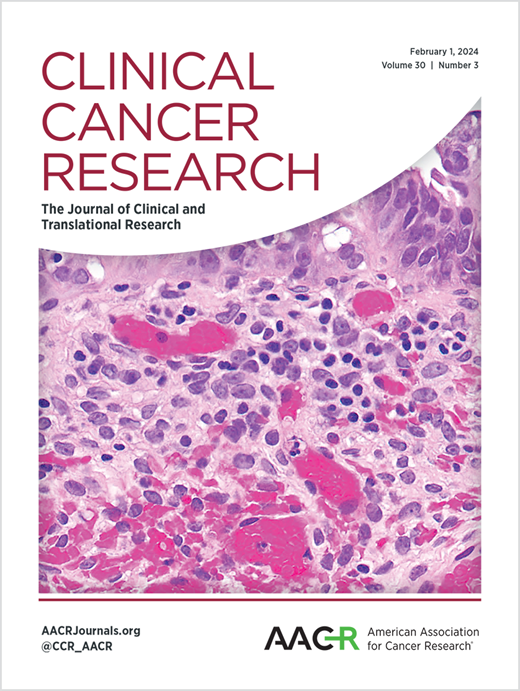A phase II trial of Naxitamab plus stepped-up dosing of GM-CSF for patients with high-risk neuroblastoma in first complete remission
IF 10
1区 医学
Q1 ONCOLOGY
引用次数: 0
Abstract
Purpose: Naxitamab is a humanized form of the murine anti-GD2 monoclonal antibody (mAb) 3F8. In an international trial, naxitamab+GM-CSF was effective against chemo-resistant high-risk neuroblastoma (HR-NB), leading to approval by the Food and Drug Administration. We now report results with patients in 1st complete remission (CR). Patients and Methods: The primary objective of this phase II protocol 16-1643 (Clinicaltrials.gov NCT03033303) was to assess event-free survival (EFS) of HR-NB patients in 1st CR treated with naxitamab+GM-CSF plus isotretinoin. HR-NB was defined as MYCN-amplified disease (any age) or metastatic disease at age >18 months. Cycles of immunotherapy were administered monthly up to 5 cycles and comprised: 1) subcutaneously-administered priming doses of GM-CSF 250µg/m2/day on days -4-to-0 (Wednesday-Sunday), followed by a step-up to 500µg/m2/day on days +1-to-+5 (Monday-Friday), and 2) naxitamab infused intravenously (30-90”) on days +1, +3, and +5 (Monday-Wednesday-Friday, i.e., 3 doses/cycle). Naxitamab was 3mg/kg/infusion (9mg/kg/cycle, i.e., ~270mg/m2/cycle). Isotretinoin 160mg/m2/day started post-cycle 2, x14 days/course, x6 courses. Results: Fifty-nine HR-NB patients (53 stage 4, 6 stage 3) were enrolled 2/2017-7/2020. At 36 months, EFS/OS were 73%/93%, but 50/59 patients received post-protocol treatment (vaccine and/or DFMO). 6/18 relapses were isolated in the central nervous system (CNS). Longer time from diagnosis to enrollment was a significantly adverse prognostic factor (p=0.04). 21/59 patients took no isotretinoin. Treatment was tolerable allowing outpatient administration. Conclusions: Naxitamab+GM-CSF is a good option to consolidate 1st CR of HR-NB patients, including those who did not undergo ASCT. Efforts to prevent CNS relapse are warranted.求助全文
约1分钟内获得全文
求助全文
来源期刊

Clinical Cancer Research
医学-肿瘤学
CiteScore
20.10
自引率
1.70%
发文量
1207
审稿时长
2.1 months
期刊介绍:
Clinical Cancer Research is a journal focusing on groundbreaking research in cancer, specifically in the areas where the laboratory and the clinic intersect. Our primary interest lies in clinical trials that investigate novel treatments, accompanied by research on pharmacology, molecular alterations, and biomarkers that can predict response or resistance to these treatments. Furthermore, we prioritize laboratory and animal studies that explore new drugs and targeted agents with the potential to advance to clinical trials. We also encourage research on targetable mechanisms of cancer development, progression, and metastasis.
 求助内容:
求助内容: 应助结果提醒方式:
应助结果提醒方式:


